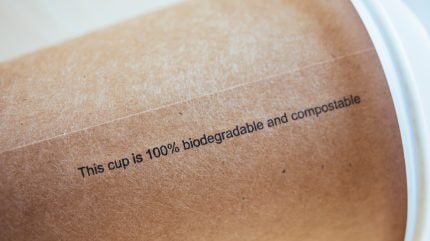
The packaging industry is undergoing a profound transformation as sustainability becomes a priority for manufacturers, retailers, and consumers alike.
Bioplastics and alternative packaging materials are gaining prominence as environmentally friendly options that aim to reduce the reliance on traditional petroleum-based plastics.

Discover B2B Marketing That Performs
Combine business intelligence and editorial excellence to reach engaged professionals across 36 leading media platforms.
These innovative materials not only address the growing concerns about plastic pollution but also offer new possibilities for packaging design and functionality.
Understanding the benefits, challenges, and future potential of bioplastics and alternative materials is essential for anyone interested in the evolving landscape of sustainable packaging.
What are bioplastics and alternative packaging materials?
Bioplastics are derived from renewable biological sources such as corn starch, sugarcane, cellulose, or other plant-based materials.
Unlike conventional plastics, which are made from fossil fuels, bioplastics can be either biodegradable, compostable, or simply bio-based without biodegradability.

US Tariffs are shifting - will you react or anticipate?
Don’t let policy changes catch you off guard. Stay proactive with real-time data and expert analysis.
By GlobalDataThis distinction is important because not all bioplastics break down naturally; some are designed to be more sustainable by reducing carbon footprint but require recycling similar to traditional plastics.
Alternative packaging materials extend beyond bioplastics to include innovations such as mushroom-based packaging, seaweed films, paper composites, and even edible packaging.
These materials are often biodegradable or compostable, breaking down naturally without leaving harmful residues. Their use in packaging ranges from protective cushioning to flexible films and rigid containers, reflecting the growing creativity in sustainable design.
The shift towards bioplastics and alternatives responds to consumer demand for eco-friendly products, alongside stricter regulations on single-use plastics across many countries.
These materials promise lower environmental impact, from sourcing and production to disposal, but they are not without challenges.
Benefits and limitations of bioplastics in packaging
The primary appeal of bioplastics lies in their potential to reduce greenhouse gas emissions and reliance on fossil fuels. Because they come from renewable resources, they contribute less to climate change when produced sustainably.
For instance, polylactic acid (PLA), a widely used bioplastic, is made from fermented plant sugars and can decompose under industrial composting conditions.
Bioplastics also offer versatility; they can mimic the properties of conventional plastics such as flexibility, transparency, and durability, making them suitable for a broad range of packaging applications from food wraps to bottles.
Their compatibility with existing manufacturing technologies means businesses can adopt them without significant changes to production lines.
However, bioplastics face notable limitations. Many require specific composting facilities to break down effectively, which are not widely available in all regions. If disposed of incorrectly, bioplastics can contribute to contamination in recycling streams, complicating waste management.
Moreover, the cultivation of raw materials like corn or sugarcane raises concerns over land use, water consumption, and the impact on food supply.
Cost remains a factor, as bioplastics generally come at a premium compared to conventional plastics. This can slow widespread adoption, especially in price-sensitive sectors.
Despite these hurdles, ongoing research and development are helping to improve bioplastic performance and reduce costs, positioning them as key players in future packaging solutions.
Emerging alternative materials reshaping sustainable packaging
Beyond bioplastics, a range of alternative materials is capturing attention for their innovative approaches to sustainability.
Mushroom packaging, made from mycelium—the root structure of fungi—is a notable example. It offers a fully compostable, biodegradable cushioning solution for protecting goods in transit and decomposes naturally within weeks when discarded.
Seaweed and algae-based packaging films present another promising avenue. These materials are renewable, degrade rapidly in natural environments, and can even provide edible options for food packaging, reducing waste further.
Paper-based composites enhanced with biodegradable coatings are also evolving, balancing sustainability with the barrier properties needed for food preservation.
Edible packaging made from natural ingredients such as rice, potato starch, or gelatin is gaining ground in niche markets, particularly for single-use applications where waste is a concern. While not yet mainstream, these materials represent an exciting shift towards a circular economy in packaging.
Despite their benefits, alternative materials often require new infrastructure for processing and recycling, along with consumer education to ensure proper disposal.
Collaboration across the supply chain, from producers to waste management firms, is crucial for maximising their environmental advantages.
The future outlook for bioplastics and alternative packaging
As sustainability remains a driving force in consumer preferences and regulatory frameworks, bioplastics and alternative materials will continue to play an increasingly important role in packaging.
Technological advancements are expected to improve the performance, biodegradability, and cost-effectiveness of these materials, making them more accessible to a broader range of industries.
One key trend is the integration of circular economy principles, where packaging is designed not just to be sustainable but also to fit within closed-loop systems for reuse, recycling, or composting.
Innovations in smart packaging, combining bioplastics with digital technologies, are also emerging to enhance product tracking and waste management.
For businesses, embracing these materials offers not only environmental benefits but also competitive advantages, as consumers increasingly seek brands aligned with their values.
Policymakers worldwide are likely to tighten regulations on single-use plastics further, encouraging investment in alternative materials and infrastructure development.
However, it remains essential to approach bioplastics and alternatives critically, recognising that no single solution fits all packaging needs. The optimal strategy involves a combination of material innovation, improved recycling systems, and consumer awareness to drive meaningful change.
In conclusion, bioplastics and alternative packaging materials represent vital steps toward a more sustainable packaging industry.
Their growing adoption reflects a global shift towards environmental responsibility, pushing the boundaries of what packaging can achieve in terms of reducing pollution and conserving resources.
With continued innovation and collaboration, these materials hold the promise of reshaping the future of packaging for the better.





